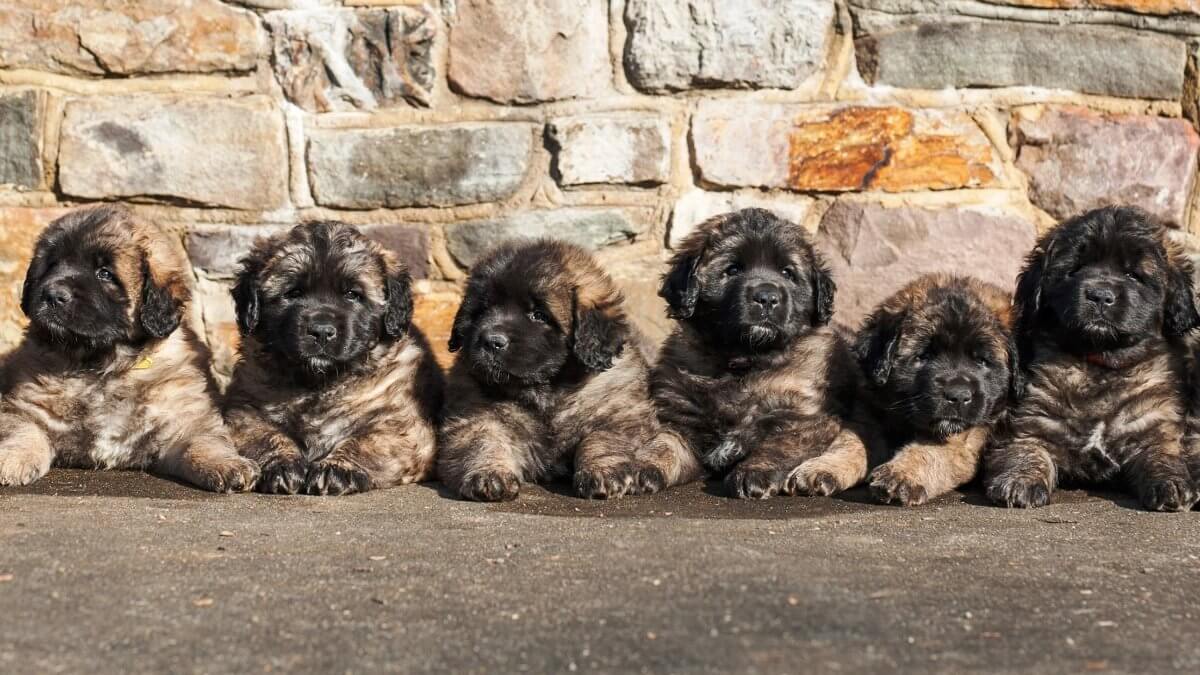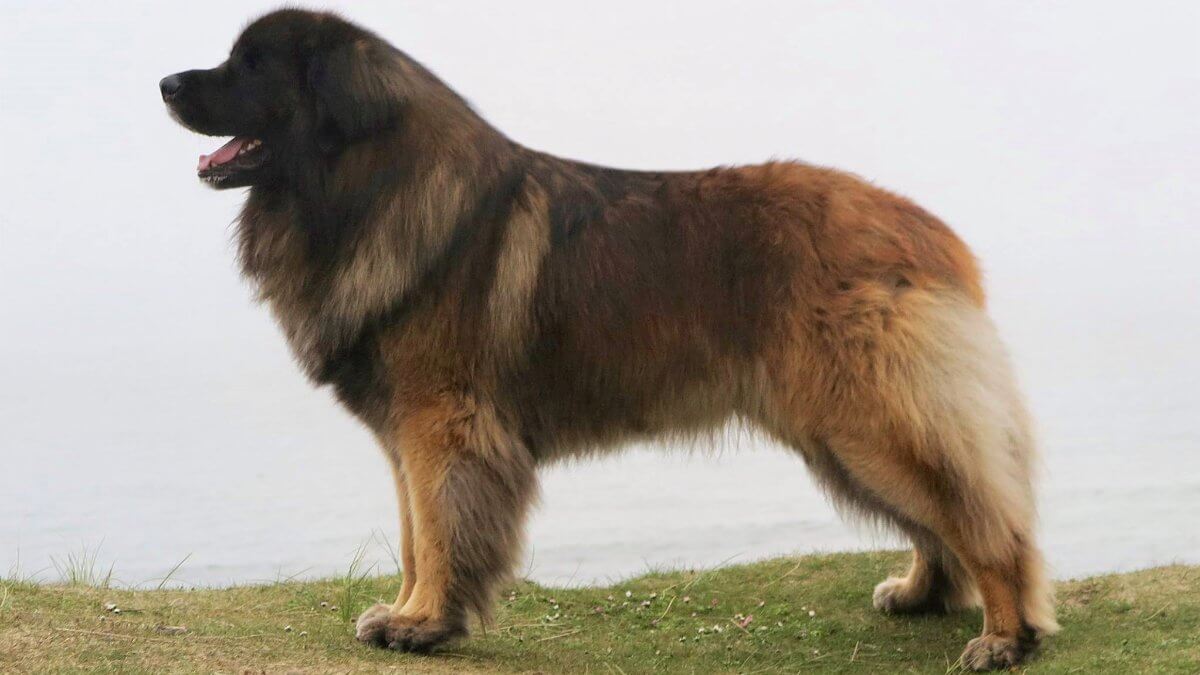
Home » Thoughts on Judging the Leonberger

This article was originally published in Showsight Magazine, September 2019 issue.
Prior to this article, ShowSight Magazine published two articles on judging the Leonberger by Agi Hejja and Alida Greendyk, well-respected breeder judges of Leonbergers. They are wonderful stand-alone resources, perpetually available online, and I would encourage anyone with an interest to read those roadmaps in full when studying the breed. Though there is value in repeating what has been said before, we are going to focus on the challenges commonly encountered when learning and applying the Leonberger standard.
A decade has passed since Leonbergers began to exhibit in AKC rings. The number of entries in a typical All-Breed ring is none to few in most of the country on a given show weekend. Don’t let that fool you; behind the scenes are enthusiastic show-goers who travel great distances to attend specialties and supported entries. One weekend there are two Leonbergers in the ring and the next weekend there are seventy!
Without consistent, large, quality entries competing from weekend to weekend, getting a sense of the breed can be difficult. If you get a chance to attend one of the twelve or so specialties put on by the Leonberger Club of America and affiliated regional clubs, I highly recommend the opportunity. Mentors will be there to help and, as a bonus, there is always food.
Judges new to the breed usually have similar fundamental questions. What are the hallmarks of the breed? How should we value type versus structure? What in the history of the breed should inform our judging? How important is size? When do I penalize or reward for coat quality? Well folks, like a Leonberger off leash beside a smelly pond, let’s dive right in!
The history of the breed Leonberger folks are likely to know and judges are likely to hear is the same story that makes for the greatest superhero movies: the origin. But, like a superhero, I think it’s the first trials that really set the character of this breed and that could use a little more attention. For the Leonberger, these major hurdles were crossed at the turn of the 20th Century by the International Club for Rottweilers and Leonbergers which formed in the region of Stuttgart, Germany–a little north of Rottweil and east of Leonberg. These fanciers started to give the breed concrete definition and real direction when the president of the Club, Albert Kull, wrote the first standard for both the Leonberger and the Rottweiler.
A century ago, the Leonberger and Rottweiler had quite a bit in common for their shared fanciers. In the club at this time, and in the German Rottweiler Club that followed, there was less emphasis on the morphology of the Rottweiler and more emphasis on their working attributes. Like Leonbergers today, Rottweilers came in a variety of sizes and colors. Imagine club members separating the lower-to-theground, muscular, short-coated Rottweilers and the taller, coated, mountain-type Leonbergers to clear the path to the breeds we love today. Even now, a hundred years after the club dissolved, black and tan Leonbergers pop up in the whelping box and red, well furnished Rottweilers are walking about! As an exercise, reading the two standards side-by-side can provide some insight into common values that have been retained even as two very distinct breeds have emerged.
Details are always important, but we really need to have the big picture foremost in the mind. A good Leonberger in your ring should embody the major characteristics of breed type. You should see a large, powerful, rectangular, working dog. The head is in balance with the body, held high above the withers, and adorned with a striking black mask. The topline and underline flow smoothly to construct a silhouette built for both drive and power. Adults exude a calm, confident, and intelligent presence. Adults will have a well-furnished, double coat that enhances the silhouette. In movement, they are graceful, powerful, efficient, and surprisingly light on their feet. You can imagine the Leonberger pulling a cart, herding sheep, performing water rescue, or snuggling with a three-year-old child. That is the Leonberger you are looking for; always keep the big picture in mind.

Very few breeds have as much variety in coat as the Leonberger. The standard names the many colors in shades of yellow, gold, red, brown, and sand and describes the black mask and lightly colored undercoat. Adding more variety, the coat comes in varying lengths, coarseness, and textures. The guard hairs, coat, undercoat, and furnishings also differ in length, coarseness, color, and texture. There are literally thousands of acceptable combinations of color, length, coarseness, and texture that could end up in your ring. Most Leonberger people think about coat like hardwood; if it’s beautiful and can do the job, it’s probably fine.
Though not explicitly explained in the standard, the adult coat is not monochromatic; there should be multiple colors in the coat: two or more shades of the main tone throughout the body, black hairs on the face, and a light undercoat. There may or may not be black guard hairs on the body and they may be quite abundant. Depending on sex, climate, care, and season, Leonbergers are constantly in different stages of being in and out of coat. My advice: don’t get too caught up in coat with Leonbergers. You are about as likely to find a DQ with coat in the Leonberger ring as to discover a hen’s tooth in a gerbil.
The Leonberger is a large, working dog similar in size to the Great Pyrenees. Functionality and agility may be compromised when Leonbergers are sized outside the standard. Achieving more size than outlined in the standard does not constitute a merit and there should not be a “size prize” in the mind of the judge. In today’s rings, you are likely to see a great variety in Leonberger height and size; a ring can easily have an eight inch span between the tallest dog and shortest bitch.
If all the Leonbergers in consideration are within standard and the merits of two exhibits are in close contention, judges should be mindful that the standard states that the preferred height of a bitch is 27.5 inches and the preferred height of a dog is 30 inches. You are more likely to have a larger than preferred Leonberger in the ring than an undersized one. Proportions, color, and the height of the handler can all work together to trick the eye, so some diligence is due when sizing up the ring. A reality check you can keep in the back of your mind: the ideal height of a Leonberger bitch and Doberman Pinscher dog are identical.
When in doubt, remember that the Leonberger is constructed of rectangles built upon rectangles. The muzzle is a broad and deep rectangle, longer than wide. The backskull is a rectangle set wider than the muzzle. The neck is longer than deep and the body is rectangular, slightly longer than deep. These rectangles work together to produce a Leonberger that is sturdy, elegant, and balanced.
Something you will observe along the rectangle angle: in adult Leonbergers, the body tends to follow the head and vice versa. A short, coarse head will usually be attached to a square, cobby body. A long, narrow head will usually be in front of a similarly long, narrow body. If you find a great body, the head will usually match. This can be particularly useful in judging young Leonbergers where the head is very slow to mature.
In Leonbergers, we tend to talk more of promise than of quality in Leonberger puppies. You can guarantee Leonberger puppies won’t get any shorter and that the bone won’t get any heavier, but almost everything else is subject to change. Angulation can be lost or gained. The coat will change color, texture, and length. The skull and muzzle will develop. Muscling will come in and the chest will spring out. The amount of change that happens is mind-boggling and you don’t have a crystal ball.
The first thing you are likely to see, especially with juniors, is a wiggly, gangly puppy with wavy (or even curly) coat that wants to go in every direction on the planet. The head may seem too small for the body and the Leonberger may decide to offer very little cooperation with the top of the lead. My advice is to evaluate what you can evaluate with as much patience and kindness as you can. In a year or two, this puppy might be a nice Leonberger! If you see harmony, balance, and good movement under all the crazy coat, you likely have a promising puppy before you.

There is no one aspect of type in the Leonberger that trumps the others. Naturally, many exhibitors strongly prefer that weight be given to the aspects of type that align with the merits or exaggerations of their exhibits or breeding program, but a good Leonberger is “one piece”–a total package that comes across as both intentional and harmonious. There is more than one way to make a tasty hamburger and there is more than one way to have a typey Leonberger. Regional differences in France, Germany, Italy, Russia, and Scandinavia were in the imports that began coming into America 40 years ago and those regional differences, exacerbated by geographical isolation in America, are strongly present today.
A well-made Leonberger in the style of a particular region should be appreciated and awarded. Look for the harmony, balance, and type in the exhibit before you. Not every supermodel needs to look exactly the same; the Leonberger is a diverse breed and we value that diversity. With the fundamentals in mind, a focus on the core aspects of breed type, and an eye for the power, elegance, and harmony that make our wonderful breed, you will be ready for those tough choices in a competitive Leonberger ring.